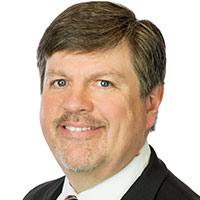A Post-Mortem of the Paycheck Protection Program
This post is part of a series titled “Supervising Our Nation’s Financial Institutions."
The Paycheck Protection Program (PPP)—which involved thousands of participating lenders, millions of borrowers and hundreds of billions of dollars in loans—ended on May 31, 2021. A key provision of the Coronavirus Aid, Relief, and Economic Security (CARES) Act of 2020, the PPP funneled potentially forgivable loans through the Small Business Administration (SBA), depository institutions and nonbank entities to allow participating employers—including sole proprietors—to keep workers on their payrolls. While some bankers and borrowers have said that the program’s implementation was a little rocky, and uncertainties about the number of jobs “saved” and loan forgiveness remain, the PPP is widely considered a success.
PPP Basics
The aim of the program was to help small businesses temporarily meet their payrolls and defined operating expenses at a time when the economy was largely shut down because of the pandemic. Initially, program access was limited to firms with 500 or fewer employees, including contract workers. Loans were granted for up to two months of payroll and were capped at $10 million. More than $800 billion was eventually allocated over the three rounds, with the SBA having approved $799.8 billion of PPP loans as of May 31, 2021.
Over time, some of the program’s restrictions were loosened while others were tightened. For example, in the initial round, businesses needed to allocate 75% of their PPP loans to salaries to qualify for loan forgiveness; in subsequent rounds, that threshold was relaxed to 60%. Companies were also given more time to spend the funds. But in the third round of funding approved by Congress in December 2020, eligibility for a second loan was limited to companies with 300 or fewer employees; also, money was set aside specifically for very small firms and for those located in low- and moderate-income communities.
Launch of the Fed’s PPP Liquidity Facility
To support banks and other institutions participating in the PPP, the Federal Reserve in April 2020 launched the Paycheck Protection Program Liquidity Facility (PPPLF). The PPPLF provided low-cost loans to PPP lenders. The Federal Reserve made PPPLF advances for the full value of the underlying PPP loans, as the credit risk to Federal Reserve banks was minimal since the PPP loans were guaranteed by the SBA.
Although the PPP has ended and the PPPLF is scheduled to stop making advances against PPP collateral on July 30, 2021, the maturities of the advances can have terms up to five years. This means the Federal Reserve will continue to support the program through 2026.
An early review suggests the PPPLF contributed to the success of the PPP. An April 2021 working paper by economists at the Board of Governors found that commercial banks that requested PPPLF advances extended more than twice the amount of PPP loans than banks that did not use the PPPLF. This working paper provides some early evidence of the success of the PPPLF as an important source of liquidity and a boost for overall PPP lending.
PPP by the Numbers
The majority of the nation’s insured financial institutions participated in the PPP. Besides banks, thrifts and credit unions, other lenders included fintech firms, small-business lending companies, microlenders, nonbank community development financial institution (CDFI) funds, the Farm Credit System and certified development companies. In 2021, banks and thrifts accounted for about 80% of PPP lenders, 54% of total loans approved and about 80% of loan dollars.
Almost 90% of the PPP loans approved in 2021 were for $50,000 or less; these loans made up almost one-third of all loan dollars extended this year. The average size of a PPP loan approved in 2021 was $42,000, compared with $206,000 in the program’s first round.
Borrowers came from all 50 states and U.S. territories, per the SBA. The vast majority of loans approved in 2021 went to firms with fewer than 10 employees. Firms in the accommodation and food services sector accounted for the largest share of PPP loan dollars at 15%, followed by construction (12%), health care and social assistance (10%), and professional, scientific and technical services (10%).
The View from District Bankers
Bankers in the Federal Reserve’s Eighth District were active participants in the PPP, and their experience appears largely reflective of participants overall. While many community bankers told us they found the program’s rollout to be challenging, most of them said they were pleased to have taken part. One thing we have heard repeatedly is that the program validated the community bank business model of relationship banking. Many bankers worked around-the-clock to serve both new and existing customers. PPP loan borrowers ranged from major employers in their communities to small day care centers. Bankers were able to help a lot of nonprofit organizations, including food banks and churches. The program also provided fee income to banks at a time of tepid loan demand and reduced earnings from interest-bearing assets.
Although there were bumps along the way and we still have much to learn about implementation of programs like the PPP and PPPLF, early indications are that these programs operated as designed and supported the nation’s small-business infrastructure during a time of great uncertainty and high unemployment. Every financial crisis gives policymakers and regulators an opportunity to review existing programs and sometimes to offer new ones. What we ultimately learn from the PPP and PPPLF will help inform future policy decisions in times of crisis.
Additional Resources
- On the Economy: Commercial Banks Appear Resilient despite Pandemic
- On the Economy: Small Business Lending Gives a Boost to Banks
- On the Economy: Community Bankers Play a Vital Role in America’s Pandemic Response
Citation
Carl White, ldquoA Post-Mortem of the Paycheck Protection Program,rdquo St. Louis Fed On the Economy, June 29, 2021.
This blog offers commentary, analysis and data from our economists and experts. Views expressed are not necessarily those of the St. Louis Fed or Federal Reserve System.
Email Us
All other blog-related questions


